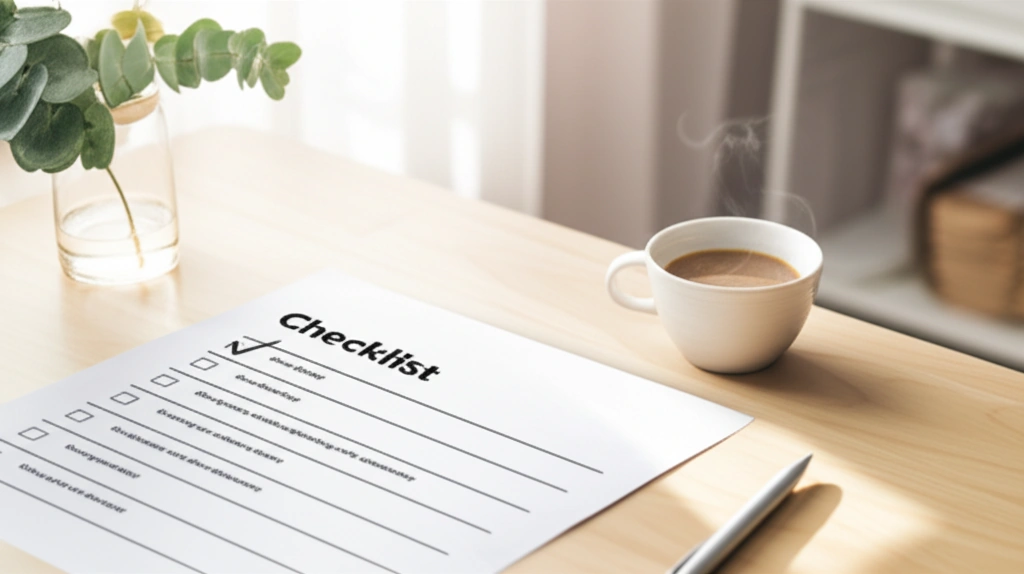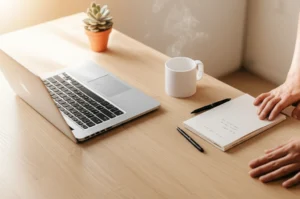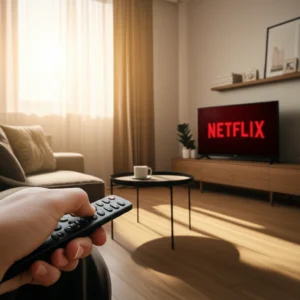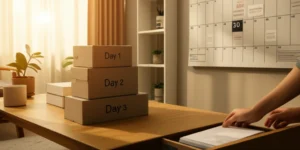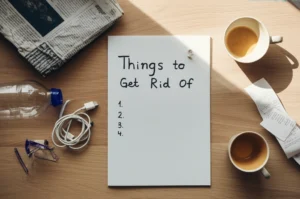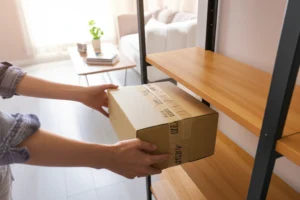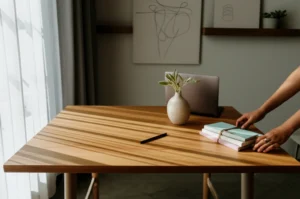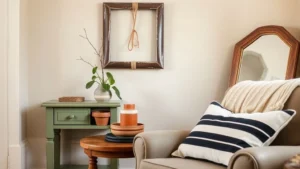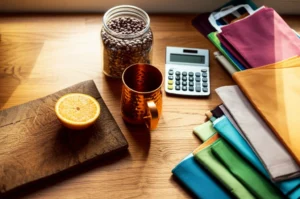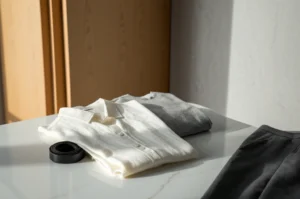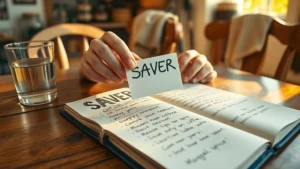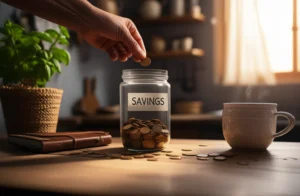Hey there, friend. If you’ve ever felt overwhelmed just looking around your home and wondering where on earth to begin, you’re in the right place. I get it — decluttering sounds like a massive, stressful chore, but what if I told you there’s a simple, doable way to clear the mess without burning out? That’s exactly what this minimalist decluttering checklist is all about: a 30-day journey that breaks it down into small, manageable steps that anyone can follow.
Minimalism isn’t just about having less stuff; it’s about gaining space — in your home and your head. And yeah, less clutter might just free up more than physical space. It can refresh your mind, boost your energy, and make life feel a little more… peaceful. I’m so excited to walk you through this because, honestly, the psychological lift from decluttering is one of the best parts. Stick with me here and I promise we’ll tackle this together — no judgment, just real talk and practical tips.
Minimalist Decluttering Defined
What’s The 30-Day Challenge?
Think of this like a gentle daily nudge to your messy space. Each day, you commit to decluttering one item or completing a tiny task like clearing out your junk drawer or tossing expired spices. It’s not about doing everything in one frantic weekend — it’s about steady progress that builds momentum without feeling overwhelming.
Who Is This For?
Whether you’re a busy creative juggling ten things at once, a parent buried under toys and laundry, or simply someone craving more calm, this checklist fits. It’s made for real life, where time and energy often don’t match our hopes for a neat home.
When To Watch Out
Now, decluttering sounds great but it isn’t a cure-all for every situation. If you’re going through big emotional changes or trauma, tackling your stuff might feel more stressful than soothing. It’s okay to pause and seek balance — minimizing doesn’t mean rushing to empty everything or neglecting your emotional needs. For a full picture, also check out the disadvantages of minimalism for some thoughtful insight.
How To Use Your Minimalist Decluttering Checklist
Set Your Ground Rules
Before you dive in, decide what happens to each item with a simple system: keep, donate, recycle, trash, or sell. Ask yourself questions like: “Have I used this in the last year?” “Does it support how I want to live now?” or even “Does it bring me joy or stress?” These prompts can save hours of agonizing decisions. Remember, you don’t have to keep things out of guilt, obligation, or just “because.”
Get Ready
Start by snapping some quick “before” photos of your room or space you want to transform — I know, it feels weird, but trust me, seeing the progress later will feel amazing. Jot down a few words or feelings about how your clutter makes you feel and what you want your space to become. This helps you stay motivated when the clutter tries to sneak back in.
Celebrate Small Wins
It’s tempting to do wild decluttering marathons — shout out to everyone who’s tried! But those big sessions often end with total burnout. Instead, a few minutes daily or tackling a specific spot like your junk drawer first lets you see quick progress and builds confidence. You can always go bigger next month, but for now, small steps win the race.
30-Day Minimalist Decluttering Checklist
Week 1: Quick Wins
- Day 1: Donate or toss one item — maybe a lonely coffee mug?
- Day 2: Clear out old coupons, expired membership cards, or flyers
- Day 3: Pick 5 kitchen utensils you never use
- Day 4: Clean out junk drawer — yes, that one!
- Day 5: Sort through mail and recycle old papers
- Day 6: Toss or donate duplicate food containers
- Day 7: Reflect on the progress — take a new photo!
Week 2: Closets and Clothes
- Day 8: Pull out clothes you haven’t worn in 6 months
- Day 9: Limit yourself to a realistic number of hangers per closet
- Day 10: Donate any items that don’t fit or feel right
- Day 11: Organize shoes and accessories — toss worn out pairs
- Day 12: Evaluate seasonal items — store what you don’t need now
- Day 13: Quick tidy of laundry essentials
- Day 14: Take stock and celebrate your lighter closet
Week 3: Living Areas & Sentimental Stuff
- Day 15: Cull magazines, newspapers, and books you no longer enjoy
- Day 16: Clear surfaces by removing excess décor and knick-knacks
- Day 17: Sort DVDs, games, or media items — keep favorites
- Day 18: Find a photo keepsake box to store sentimental bits without clutter
- Day 19: Consider digital alternatives—scan papers or photos to save space
- Day 20: Give away extra furniture you no longer need
- Day 21: Reflect again — your home is feeling lighter, right?
Week 4: Kitchen, Bathroom & Digital
- Day 22: Toss expired spices, pantry items, and expired food
- Day 23: Say goodbye to unused small appliances
- Day 24: Declutter expired cosmetics and half-used toiletries
- Day 25: Clean out medicine cabinets — safely dispose expired meds
- Day 26: Clear digital clutter: emails, photo duplicates, old apps
- Day 27: Backup and organize important digital files
- Day 28: Schedule regular digital declutter reminders
Bonus Days: Garage & Storage
Use these days for bigger spaces that need multiple sessions. Keep in mind, there’s no rush — sometimes professional help or donation pick-ups are worth it.
Room-By-Room Minimalist Checklist
Kitchen
This is usually the clutter hotspot! Start with expired foods, mismatched containers, and extra gadgets gathering dust. Keep only what you truly use every week.
Bedroom
Focus on your closet and linens. If you haven’t worn it (or used it) in more than a year, it’s probably time to say goodbye. Seasonal swaps help keep what you need handy while storing the rest neatly.
Living Room
Less is more here. Donate old magazines and newspapers, rethink excess décor, and consider more functional furniture layouts. Fewer things make the space feel peaceful and inviting.
Bathroom
Clear expired meds and old beauty products, and get rid of duplicates. Have just the essentials visible, and store extras neatly out of sight to reduce visual clutter and stress.
Office & Digital
Don’t forget the digital clutter! Overloaded inboxes and messy files cause serious mental clutter. Regularly archive what you don’t need and unsubscribe from unwanted emails. This digital decluttering is a powerful part of minimalism.
The Psychology Behind Minimalist Decluttering
If you’ve felt a mix of relief and anxiety facing your clutter, you’re not alone. Our attachments to stuff are surprisingly complex. We hold onto things for memories, fear of future need, or just pure habit. The psychology of minimalism helps us understand why it’s tough to let go, and the gentle way forward.
On the brighter side, the psychological benefits of minimalism include better focus, lower stress, and more mental freedom. When your space is calm, your brain tends to follow.
But be mindful, disadvantages of minimalism exist too — it’s easy to swing into extremes or feel guilty about keeping sentimental things. Balance and compassion towards yourself are key.
Tips To Stay on Track and Enjoy Minimalism
- Focus on value: Keep items that genuinely serve your life or bring you joy.
- Ask for support: Sometimes a friend or family member’s perspective helps untangle stuck feelings around stuff.
- Set small goals: Ten minutes a day beats “all weekend or bust” every time.
- Remember your why: Revisit your initial notes or photos on tough days.
- Celebrate progress: Before/after photos are surprisingly motivating.
- Try some expert tips: Seasonally rotate clothes, designate donation boxes, and use a one-in-one-out rule to avoid backsliding.
Wrapping It Up With Heart
Embarking on a minimalist decluttering checklist journey isn’t just about clean shelves or empty closets. It’s about creating space for what matters — more calm, more clarity, more you. Start small, be kind to yourself, and watch how those little daily actions turn your space into a place that feels like a warm hug every time you walk in.
Remember, minimalism isn’t about perfection; it’s about freedom. Freedom from stuff that weighs you down and freedom to live lighter and fuller.
So, what’s your first mini-task going to be today? Maybe grab that old forgotten mug and set it aside to donate? You’ve got this — and I’m cheering for you all the way. If you ever want to dive deeper into how minimalism affects your mind or hear about some of the benefits of extreme minimalism, I’ve got those stories too.
Let’s make your home a place that sparks joy — one small step at a time.

